Jeff Solheim, RN, Penny Edwards, and Project Helping Hands
The luckier groups wake up at four in the morning to stand in line. Others arrive after walking for two days. They all come to receive free health care or dental work, and they all leave after being treated by a physician, nurse, or dentist. More importantly, they walk away with an education. While waiting in a line of 100 or more, they are taught how to keep themselves healthy -- how to dig a latrine or how to properly wash their hands, for example.
The Goals of Project Helping Hands
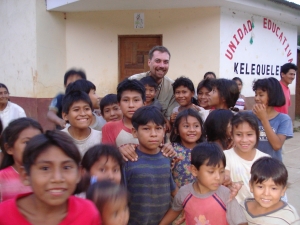
The clinic is sometimes in a church, other times it's in a school room, and sometimes it's just out in the open. It is always staffed by both Americans and local healthcare providers and translators. The organization responsible for bringing these mobile clinics to places in need like Bolivia, the Dominican Republic, and Kenya is Project Helping Hands (PHH).
"We provide healthcare education, public health, dental, medical, and surgical services to underprivileged areas of the world," said Jeff Solheim, RN, director and founder of PHH, who has personally been on over 30 PHH humanitarian trips. Depending on the country and the critical needs of these remote areas, PHH takes the appropriate team and does whatever is needed, he said.
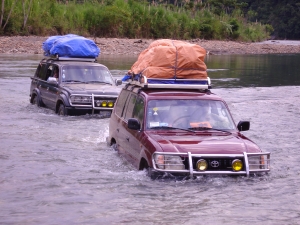
The PHH teams work with local healthcare staff to effectively treat region-specific ailments, like worms or tuberculosis, that are less common in the patients PHH team members commonly treat in the U.S. "We integrate national doctors, nurses, dentists into our teams so we can work with them," said Solheim. "We can work with them, and we can learn about their diseases and, in turn, they can learn about our treatments. So we really try to make it a cross-cultural experience for everybody."
The Many Roles of PHH Volunteers
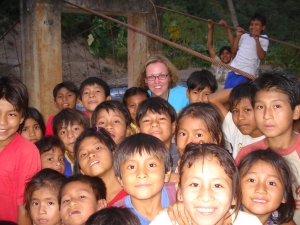
On a recent trip to Kenya, Solheim and his team of twelve volunteers managed to see over 1500 patients in just two weeks. The most patients a PHH team has seen in one day is 220, according to Penny Edwards, director of clinics for PHH. "We usually see everybody until clinic ends, when it gets dark," she said. "But in one village, there were a lot of men who worked out in the fields and didn't get in until after dark. After working a full day in the clinic, I went to my team and said, 'we really need to see these guys.' So we used candles and flashlights with no electricity to treat 40 more people," she said.
Edwards is the first to admit that leading a PHH team is a lot of hard work. "You get tired of trying to go through translators and figure things out," she said. But the gratitude that the people express after being treated is what keeps her coming back. "They are very, very thankful. You give them two weeks of Tylenol and they're so thankful. And that is what makes this worthwhile. I also collect all the samples from hotels I stay at. So I give them a little hand lotion and they are so thankful," she said.
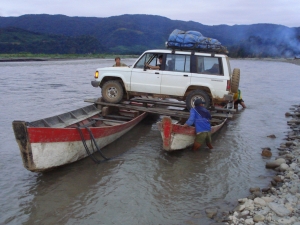
Working with little or no electricity or running water in most villages is exhausting, as is the traveling. Often, PHH teams set up their clinic in a new village every day of their two-week trip. The teams travel in vans or jeeps most of the time, but unconventional transportation, like dugout canoes or simply walking across rotting, hand-built suspension bridges with no rails, is sometimes required to reach remote villages.
Despite the long hours and rugged conditions, Edwards and the volunteers never seem to forget why they are there: to help those in need.
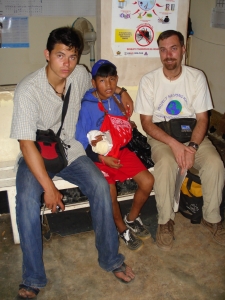
"We had moved to the next village when we got a call saying that a little girl had broken her leg in the village we had just left," Edwards said. She returned to the village with the nurse practitioner and a driver. "We found the little girl, and her leg was definitely broken. So we splinted it and gave her some pain meds and brought her all the way back to where we were staying." Edwards continued, "We paid for her and her dad to spend the night in the town we were in. We paid for her trip to La Paz, and we paid for her surgery."
While this example of Edwards funding a child's surgery goes above and beyond what it is expected of PHH team members, the trips would not be possible without fundraising or out-of-pocket funds from the volunteers themselves. When applying for a position on a PHH team, volunteers agree to pay for their own trips, which include airfare, accommodations, food and transportation.
Volunteers also agree to bring 50 pounds of supplies and medication with them. Solheim explained, "We ask our volunteers to bear the large brunt of it. So they do everything from hitting up pharmaceutical reps to buying medications themselves. We also purchase a lot of the indigenous medications overseas for worms or TB."
The Long-Term Impact of Project Helping Hands

While healthcare is definitely what draws people into the clinics, the real focus of PHH is education, said Solheim. "We use the clinics, the dentists to get people to come, but while they're there, we've developed a large educational component -- about breastfeeding, about avoiding worms, etc," he said. "We try to leave a footprint. While they're in the lineup waiting to see a doctor or nurse, we're out there with story books and coloring books, trying to leave them with a lasting healthcare education."
The efforts of PHH have not been futile. Edwards has already seen evidence of the changes that she and her team members have introduced since she started volunteering with the organization nine years ago. "Now that I've been back to some of the same villages, we can see that they really are listening. They've built latrines; the children are washing their hands," she said.
About the Author
Kelly L. McCoy is a freelance medical writer based in Atlanta, GA.
About Angels in Medicine
Angels in Medicine is a volunteer site dedicated to the humanitarians, heroes, angels, and bodhisattvas of medicine. The site features physicians, nurses, physician assistants and other healthcare workers and volunteers who reach people without the resources or opportunities for quality care, such as teens, the poor, the incarcerated, the elderly, or those living in poor or war-torn regions. Read their stories at www.medangel.org.